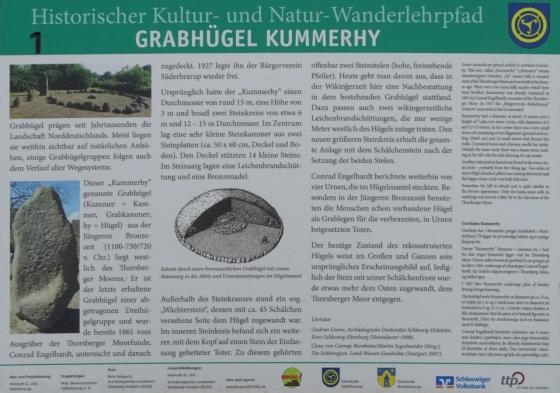taken from the on-site infromation board:
IDSTEDT COMMUNITY
- Megalithic tomb “Idstedter Räuberhöhle” -
Tomb from the early Stone Age (passage grave); built about 2900-2600 BC. One of the few megalithic tomb from Schleswig-Holstein preserved in its original form.
A total of 9 support stones and 3 capstones, joints exposed with dry masonry; from the passage only 4 stones; length 4.30 m, width 1.80 m, height 1.50 m. Hill mantle of stones.
The builders of such tombs belonged to the so-called Funnel Beaker Culture. They were the first peasant population to cultivate agriculture and livestock.




















